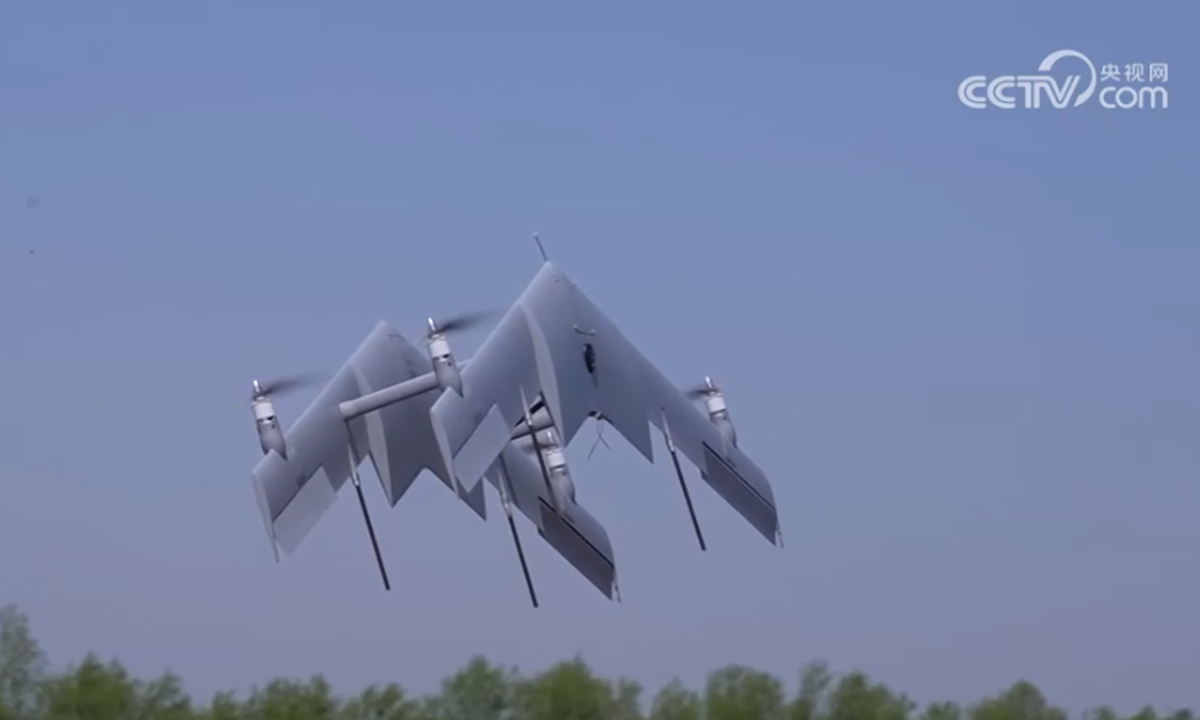
A screenshot of the two-wing vertical take-off and landing unmanned aerial vehicles from China Central Television
China-developed global pioneering tandem flying-wing vertical takeoff and landing unmanned aerial vehicles (UAV) was unveiled at the 25th China Hi-Tech Fair (CHTF), which was concluded on Sunday in China’s tech hub of Shenzhen. It can realize takeoff and landing in vertical state, and can fly at normal level after taking off, China Central Television reported.
The new type of drone is independently developed and manufactured by researchers from the Changchun Institute of Optics, Fine Mechanics and Physics, the Chinese Academy of Sciences. It adopts the globally pioneering aerodynamic layout of tandem flying-wing and multi-rotor.
The researchers have mastered the entire technological chain, including the driving system, sensor data fusion, flight control system, and algorithms. They have achieved multiple performance limits of drones, such as operating at temperatures as low as -40 C, or at an altitude of 5,500 meters, or taking off and landing in strong level-seven winds, according to the report.
By adopting the tandem flying-wing design, it is possible to achieve vertical taking off and landing without a runway, making it significantly more adaptable, Liao Dongpo, the person in charge of the exhibition from the Changchun institute said, according to media reports.
Fu Qianshao, a Chinese aviation expert, told the Global Times on Monday that China had also developed single wing vertical takeoff and landing drones, and compared with the traditional solo wing design, this new tandem flying-wing design can provide more stability when operating in strong crosswind.
While tandem wing configuration has less aerodynamic efficiency than an equivalent conventional single wing configuration, the advantages it provides are more significant in this case, Fu said.
It is surely a unique aircraft, the expert said.
The UAV mainly uses new energy lithium batteries as its power source, with its rotor providing upward lift during vertical taking off, and providing horizontal thrust after transitioning to horizontal flight. It also provides the UAV with superior payload capacity and endurance.
It has a total weight of around 50 kilograms when fully loaded, and a carrying capacity of about 17-18 kilograms, with a battery life of up to four hours, according to Liao.
In June, China published its first mandatory national standards for the civil drone industry to ensure the sector’s healthy development. The new policy, due to take effect on June 1, 2024, includes mandatory technical requirements covering 17 areas from electronic fences to remote identification and emergency disposal processes.
Global Times




